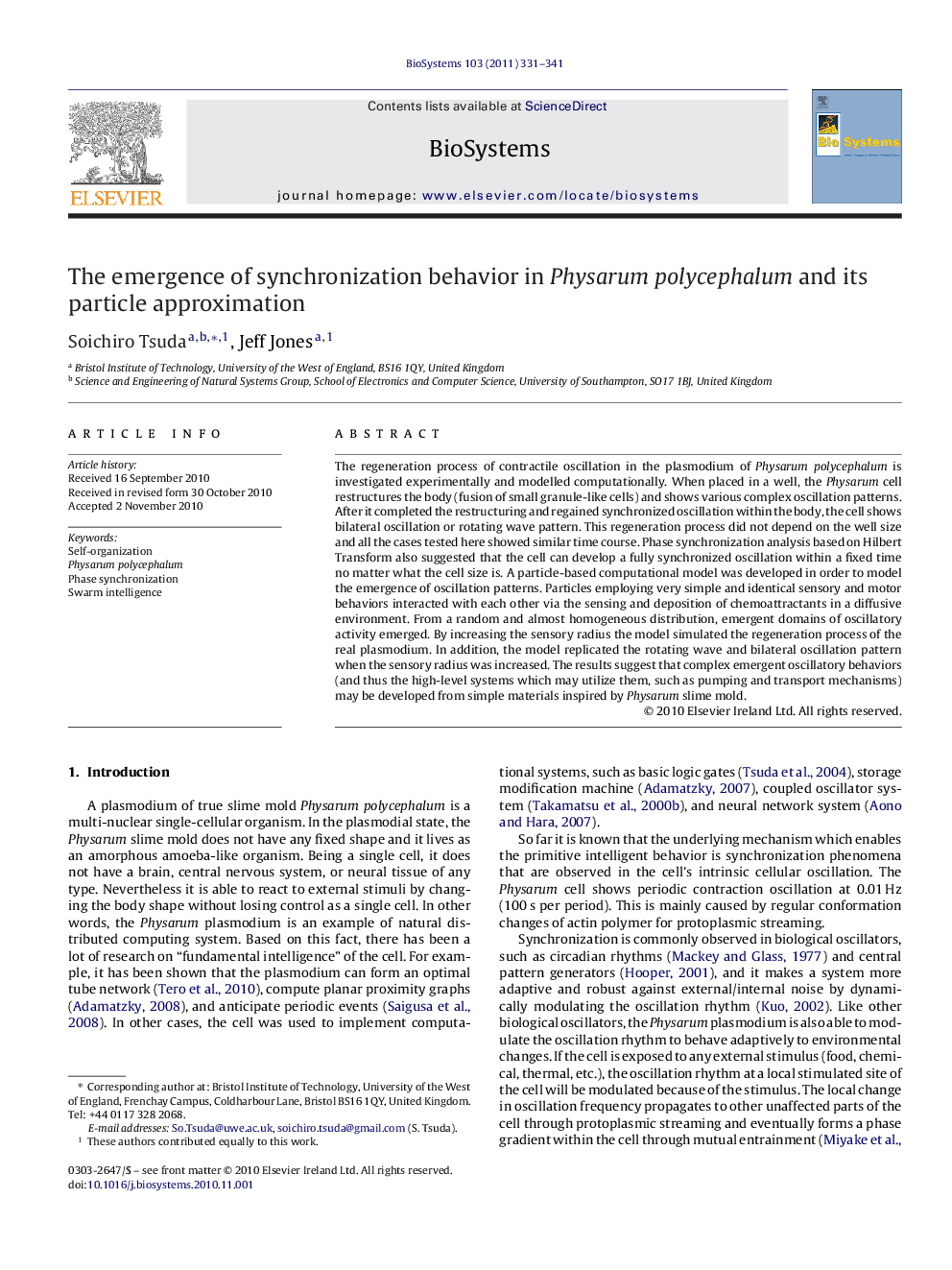| کد مقاله | کد نشریه | سال انتشار | مقاله انگلیسی | نسخه تمام متن |
|---|---|---|---|---|
| 10884626 | 1079434 | 2011 | 11 صفحه PDF | دانلود رایگان |
عنوان انگلیسی مقاله ISI
The emergence of synchronization behavior in Physarum polycephalum and its particle approximation
دانلود مقاله + سفارش ترجمه
دانلود مقاله ISI انگلیسی
رایگان برای ایرانیان
کلمات کلیدی
موضوعات مرتبط
مهندسی و علوم پایه
ریاضیات
مدلسازی و شبیه سازی
پیش نمایش صفحه اول مقاله

چکیده انگلیسی
The regeneration process of contractile oscillation in the plasmodium of Physarum polycephalum is investigated experimentally and modelled computationally. When placed in a well, the Physarum cell restructures the body (fusion of small granule-like cells) and shows various complex oscillation patterns. After it completed the restructuring and regained synchronized oscillation within the body, the cell shows bilateral oscillation or rotating wave pattern. This regeneration process did not depend on the well size and all the cases tested here showed similar time course. Phase synchronization analysis based on Hilbert Transform also suggested that the cell can develop a fully synchronized oscillation within a fixed time no matter what the cell size is. A particle-based computational model was developed in order to model the emergence of oscillation patterns. Particles employing very simple and identical sensory and motor behaviors interacted with each other via the sensing and deposition of chemoattractants in a diffusive environment. From a random and almost homogeneous distribution, emergent domains of oscillatory activity emerged. By increasing the sensory radius the model simulated the regeneration process of the real plasmodium. In addition, the model replicated the rotating wave and bilateral oscillation pattern when the sensory radius was increased. The results suggest that complex emergent oscillatory behaviors (and thus the high-level systems which may utilize them, such as pumping and transport mechanisms) may be developed from simple materials inspired by Physarum slime mold.
ناشر
Database: Elsevier - ScienceDirect (ساینس دایرکت)
Journal: Biosystems - Volume 103, Issue 3, March 2011, Pages 331-341
Journal: Biosystems - Volume 103, Issue 3, March 2011, Pages 331-341
نویسندگان
Soichiro Tsuda, Jeff Jones,